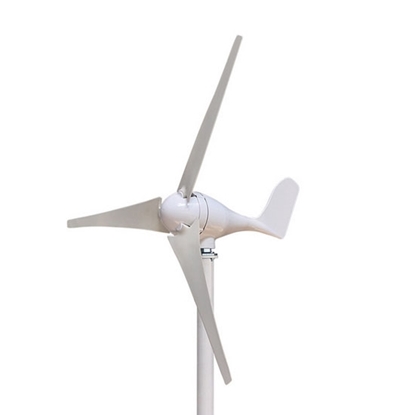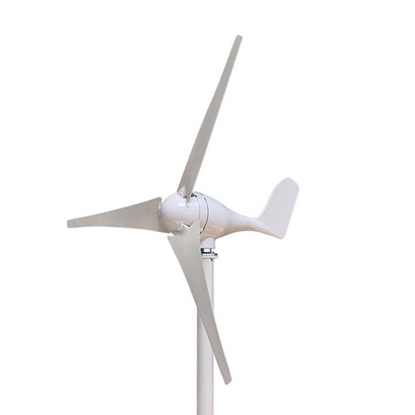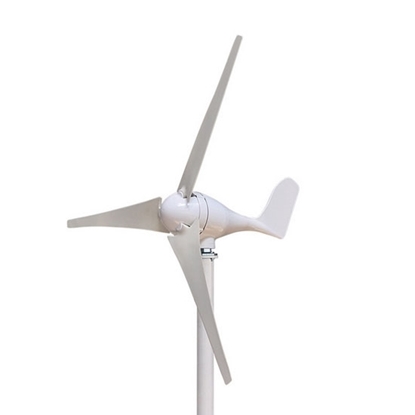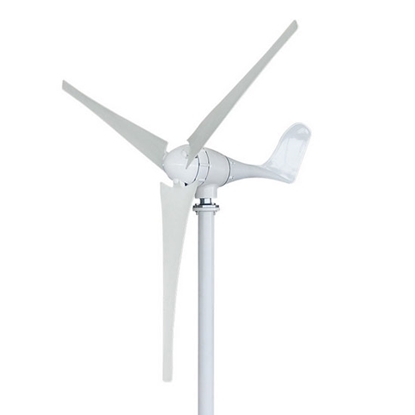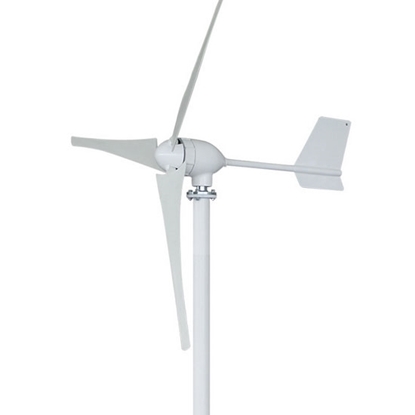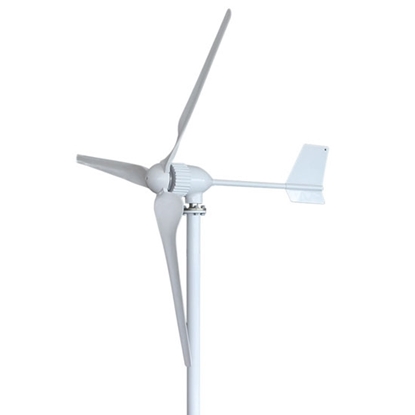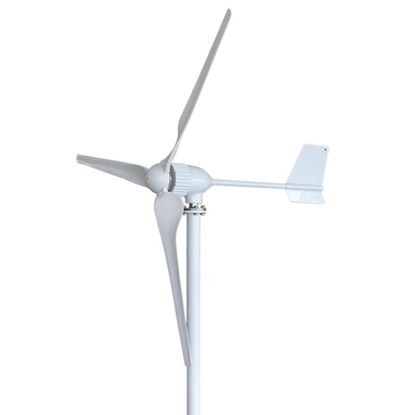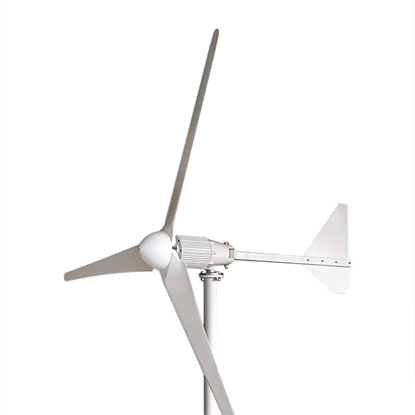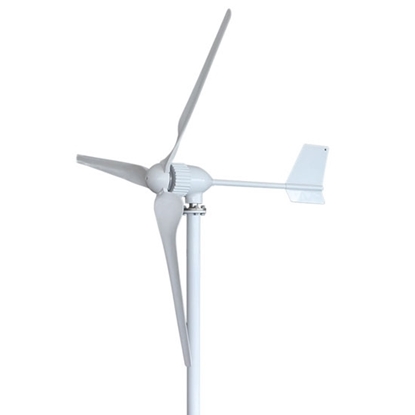Horizontal Axis Wind Turbine
100W Horizontal Axis Wind Turbine, 12V/24V
200W Horizontal Axis Wind Turbine, 12V/24V
300W Horizontal Axis Wind Turbine, 12V/24V
400W Horizontal Axis Wind Turbine, 12V/24V/48V
500W Horizontal Axis Wind Turbine, 12V/24V/48V
600W Horizontal Axis Wind Turbine, 12V/24V/48V
800W Horizontal Axis Wind Turbine, 24V/48V
1000W Horizontal Axis Wind Turbine, 24V/48V
2000W Horizontal Axis Wind Turbine, 48V/96V
5000W Horizontal Axis Wind Turbine, 220V/380V
How much does a horizontal axis wind turbine cost? Horizontal axis wind turbine cost prices as listed on the website. ATO provides 100 watt, 200 watt, 300 watt, 500 watt to 1000 watt wind horizontal axis turbine, other power can be customized.
The horizontal axis wind turbine blade is made of high strength nylon composite material with high strength, good toughness, uv protection, corrosion protection, wind resistance, good aerodynamic performance and unique stall protection characteristics of strong wind. Horizontal axis wind turbine cost can be used for house, boat and wind solar hybrid streetlight.
ATO.com offers a wide range of high quality horizontal axis wind turbines, ideal for generating renewable energy. Our wind turbines are efficiently designed to withstand the harshest weather conditions, even in low wind conditions. With a wide range of sizes and power outputs to choose from, there is one to suit your needs and budget. Whether you are looking to power your home, farm or business, we have the right solution for you.
How does a horizontal axis wind turbine work?
A horizontal axis wind turbine (HAWT) works by using the kinetic energy of wind to rotate a rotor with blades, which in turn drives a generator to produce electricity. Here's a step-by-step breakdown of how it works:
- The wind flows over the blades of the rotor, causing them to turn.
- The rotor is connected to a shaft, which in turn is connected to a gearbox. The gearbox increases the rotational speed of the rotor to a level suitable for driving the generator.
- The generator is connected to the gearbox, and converts the rotational energy of the rotor into electrical energy.
- The electrical energy is sent to a transformer, which steps up the voltage to a level suitable for transmission over power lines.
- The electricity is then transmitted to the power grid, where it can be distributed to homes and businesses.
The design of a HAWT can vary depending on the specific manufacturer, but the basic principles of operation are the same. The efficiency of the turbine depends on factors such as the size of the rotor, the wind speed, and the design of the blades.
What are the advantages of a horizontal axis wind turbine?
Horizontal axis wind turbines (HAWT) have several advantages over other types of wind turbines:
- Higher Efficiency: HAWTs are generally more efficient than other types of wind turbines due to their ability to face into the wind and capture more of the wind's energy.
- Lower Cut-In Speed: HAWTs have a lower cut-in speed (the wind speed at which they start generating electricity) than vertical axis wind turbines (VAWT), which means they can start producing electricity at lower wind speeds.
- Greater Scalability: HAWTs can be scaled up to larger sizes more easily than VAWTs, making them a more practical option for larger-scale wind farms.
- Lower Maintenance Costs: HAWTs have fewer moving parts than VAWTs, which means they require less maintenance over time.
- Established Technology: HAWTs are a well-established technology, with a long history of successful use in wind power generation, making them a reliable and trusted option for renewable energy.
- More Aesthetically Pleasing: HAWTs tend to be more aesthetically pleasing than VAWTs, which can be important in areas where the visual impact of wind turbines is a concern.
Overall, the advantages of HAWTs make them a popular choice for commercial wind power generation.
What factors can affect the performance of a horizontal axis wind turbine?
Environmental factors such as wind speed and direction can significantly affect the performance of a horizontal axis wind turbine (HAWT).
Wind speed is one of the most critical factors that affect the performance of a HAWT. As wind speed increases, the power output of the turbine increases, and vice versa. This is because the kinetic energy of the wind is directly proportional to the cube of the wind speed, which means that a small increase in wind speed can result in a significant increase in power output. However, at very high wind speeds, the turbine may shut down to prevent damage to the blades and other components.
Wind direction is also an essential factor affecting the performance of a HAWT. Ideally, wind should approach the turbine perpendicular to the plane of rotation for optimal power output. However, if the wind direction changes rapidly or if it comes from a different direction, the turbine's performance may be affected. This is because the blades of the turbine are designed to extract maximum energy from the wind when it approaches from a specific angle, and a change in wind direction may cause the blades to stall, reducing the turbine's power output.
Other environmental factors such as air density, temperature, humidity, and atmospheric pressure can also affect the performance of a HAWT. For instance, as air density decreases, the power output of the turbine decreases because there is less air mass available to extract energy from. Similarly, as temperature and humidity increase, the air becomes less dense, which can also reduce the turbine's power output. Atmospheric pressure can affect the turbine's performance by affecting the air density and the wind speed.
Overall, environmental factors such as wind speed and direction can significantly affect the performance of a HAWT. Proper design and operation of the turbine can help optimize its performance in varying environmental conditions.
Horizontal axis wind turbine vs vertical axis wind turbine
The main difference between horizontal axis wind turbines (HAWT) and vertical axis wind turbines (VAWT) is the orientation of the rotor axis relative to the ground.
In HAWT, the rotor axis is horizontal, and the blades rotate around a horizontal hub. These turbines typically have blades that resemble airplane wings and spin around a tall tower, with the wind blowing perpendicular to the rotor blades. HAWT is the most common type of wind turbine used for commercial wind energy production.
On the other hand, VAWT have a vertical rotor axis and blades that rotate around a central vertical shaft. These turbines can have blades that resemble an egg beater or a helix, and they can capture wind from any direction, making them more suitable for areas with variable wind direction. However, VAWT generally has a lower efficiency compared to HAWT, and they are less commonly used for large-scale wind energy production.
In summary, the key difference between HAWT and VAWT is the orientation of the rotor axis, which affects the blade design, wind direction, and energy efficiency of the turbine.

